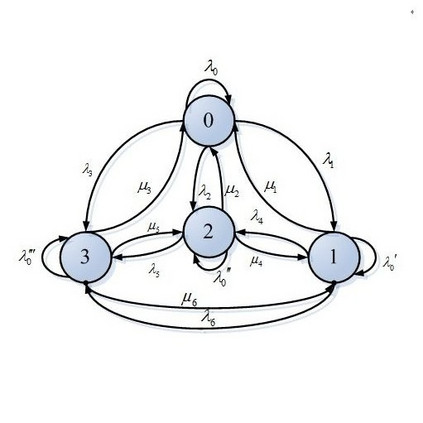We present novel online mechanisms for traffic intersection auctions in which users bid for priority service. We assume that users at the front of their lane are requested to declare their delay cost, i.e. value of time, and that users are serviced in decreasing order of declared delay cost. Since users are expected to arrive dynamically at traffic intersections, static pricing approaches may fail to estimate user expected waiting time accurately, and lead to non-strategyproof payments. To address this gap, we propose two Markov chain models to determine the expected waiting time of participants in the auction. Both models take into account the probability of future arrivals at the intersection. In a first model, we assume that the probability of future arrivals is uniform across lanes of the intersection. This queue-based model only tracks the number of lower- and higher-bidding users on access lanes, and the number of empty lanes. The uniformness assumption is relaxed in a second, lane-based model which accounts for lane-specific user arrival probabilities at the expense of an extended state space. We then design a mechanism to determine incentive-compatible payments in the dynamic sense. The resulting online mechanisms maximize social welfare in the long run. Numerical experiments on a four-lane traffic intersection are reported and compared to a static incentive-compatible mechanism. Our findings show that static incentive-compatible mechanisms may lead users to misreport their delay costs. In turn, the proposed online mechanisms are shown to be incentive-compatible in the dynamic sense.
翻译:我们为交通十字路拍卖提供了新的在线机制,用户在其中竞价优先服务。我们假定,在车道前端的用户被要求申报其延迟成本,即时间价值,而且用户的服务按申报延迟成本的顺序排列。由于用户预计会动态地到达交通十字路口,静态定价办法可能无法准确估计用户预期的等待时间,导致不采用战略防火付款。为了解决这一差距,我们提议了两个Markov链式模型,以确定参加拍卖的参与者预期等待时间。两种模型都考虑到交叉路口未来抵达的概率。在第一个模型中,我们假设未来抵达的概率在十字路口各行道之间是统一的。这一基于排式模型仅跟踪出入口道上低、高点用户的数量以及空道的数量。统一性假设在第二个基于车道的模式中是松懈的,该模式考虑到车道特定用户抵达的概率,而牺牲了扩大的州空间。我们随后设计了一种机制,以确定动态意义上的激励与支付相匹配的可能性。我们假设的未来抵达概率的概率是跨车道机制。由此而形成的在线机制在长期里展示了一种最激烈的检验。




